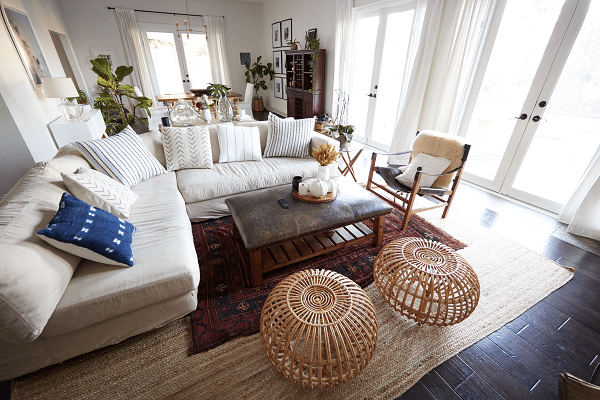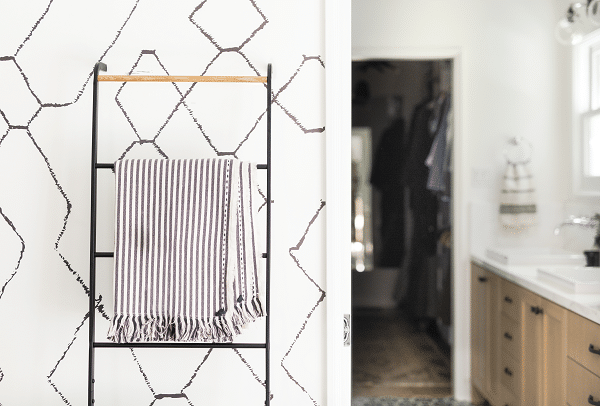Do you love interior design? If you’re looking for ways to improve your skills, you’ve come to the right place. This blog post will give you some tips to help you become a better interior designer. It will talk about choosing the right colors, creating a cohesive look, and using accessories to add personality to your space. So whether you’re just starting or looking for ways to take your design skills to the next level, read on for some helpful tips!
Understand How Colors Work In A Space

Adding color to a space can dramatically impact the overall look and feel of the room. But with so many options to choose from, it can be challenging to know where to start. If you’re looking to improve your interior design skills, understanding how colors work in a space is an excellent place to start. There are three main ways colors can be used in space: an accent, a base, or a focal point.
Using color as an accent can help add interest and depth to a room. A pop of color on an accent wall or furniture can make a space come alive. Meanwhile, using color as a base helps create a sense of harmony and balance. A room with all white walls may feel cold and sterile, but adding in some colorful accents can help to warm it up.
Finally, using color as a focal point can help to create a sense of drama and interest. A bold piece of art or a brightly colored sofa can make a statement in a space. So, the next time you’re considering adding some color to your home, keep these principles in mind. A little bit of knowledge about how colors work in space can go a long way!
Work On Your Spatial Awareness

If you’re interested in interior design, it’s important to have strong spatial awareness skills. This means visualizing how a space will look once furnished and decorated. It also involves accurately judging measurements, so you can ascertain whether a piece of furniture will fit in a particular spot. Having spatial solid awareness skills will help you create beautiful and functional rooms that are aesthetically pleasing and practical. Here are some tips for improving your spatial awareness skills:
- Take measurements before shopping for furniture or decorative items. This way, you’ll know exactly what will fit in the available space.
- Use graph paper or sketching software to create floor plans of rooms. This will help you visualize how different furniture arrangements will look and feel in a space.
- Practice estimating measurements. Next time you’re out walking, try to estimate the size of objects around you, such as buildings or trees. By honing your estimation skills, you’ll be better able to judge measurements when working on interior design projects.
- Visit showrooms and model homes. Seeing professionally designed spaces can give you inspiration for your projects, and it can also help you get a better sense of how to use space effectively.
If you’re serious about becoming a better interior designer, then improve your spatial awareness skills. With a bit of practice, you’ll be able to create functional and beautiful spaces that meet all of your needs.
Learn To Create A Cohesive Look

Whether you’re new to interior design or just looking to refresh your skills, learning how to create a cohesive look is essential. A successful interior design approach focuses on picking colors and textures that work together in harmony, creating a sense of flow and cohesion throughout the space. Think about the overall palette you want to use: do you prefer warm or cool tones? And what sort of textures do you gravitate toward? Will your space have mostly rich velvets and deep jewel tones, or are light creams and whites more appropriate?
Once you’ve decided on these essential elements, you can begin to incorporate pattern and detail that reinforces the overall aesthetic. You might consider choosing one bold focal piece, like a statement sofa or an eye-catching rug, and then adding more minor accent details complementing this core element. For example, if you pick an intricately patterned armchair as your main accent piece, try incorporating smaller patterns in pillows and curtains to enhance the overall look.
By carefully planning out the visual elements of your space, you can create a cohesive design that reflects your style. With attention to detail, you’ll be well on your way to mastering the art of interior design!
Find Out How To Balance Function And Visual Appeal

Most people love being able to design their own homes, but many are unsure of where to start. Interior design is all about creating a functional and visually appealing space. Finding the right balance between these two elements can be tricky, but it is essential to create a successful design. There are a few key things to keep in mind when achieving this balance. First, it is important to consider the purpose of the space. Is it meant for entertaining guests? Or is it simply a place for relaxing after a long day?
Once you have determined the function of the space, you can begin to focus on the aesthetic. What kind of feeling do you want to create? Is it a light and airy space or a more cozy and intimate one? Once you have a clear vision of the space, you can start to put together a plan. This may involve shopping for furniture and accessories or even making some changes to the room’s layout.
Whatever you do, keep in mind the importance of balancing function and visual appeal. You can create a beautiful and inviting space that everyone will enjoy with a little effort.
Learn How To Use Accessories Correctly

When it comes to interior design, one of the most critical aspects is choosing the right accessories. Accessories can add a touch of personal style to any space, and used correctly. They have the power to make even the simplest room feel sophisticated and well-designed. Whether working with a limited budget or an unlimited budget, learning how to use accessories effectively is essential for achieving your unique vision in any room. There are several essential techniques that you can use when selecting and incorporating accessories into your space.
The first step is to carefully consider each piece’s shape, color, texture, and lighting. The second step is to think about how different objects will work together in combination – for example, selecting different shades of the same color can help create a cohesive look. Thirdly, it’s important to take practical considerations into account as well – furniture placement can be just as important as an accessory selection when creating a balanced look that feels both inviting and impactful. With these simple tips in mind, you can start learning how to effectively use accessories in your interior design projects and achieve truly stunning results.
Master Your Interior Design Skills
By following these tips, you can improve your interior design skills and create beautiful spaces that reflect your style. With attention to detail and a focus on function and visual appeal, you can succeed in any design project. Additionally, learning to use elements correctly is an essential part of creating inviting and impactful interiors. By keeping these key tips in mind, you can start transforming any space into a stylish and inviting one.


